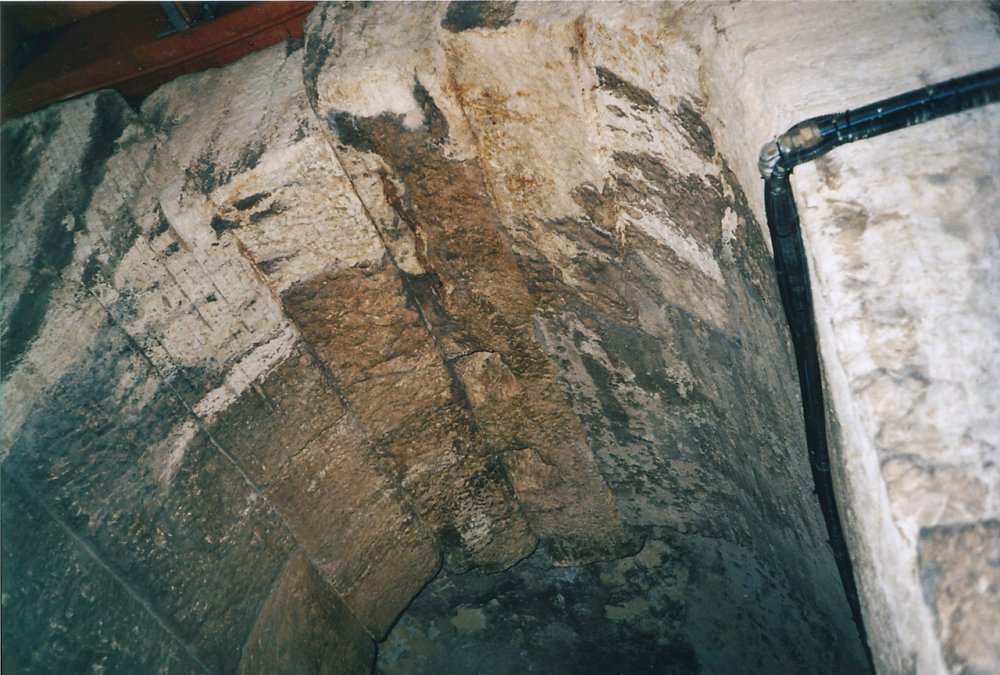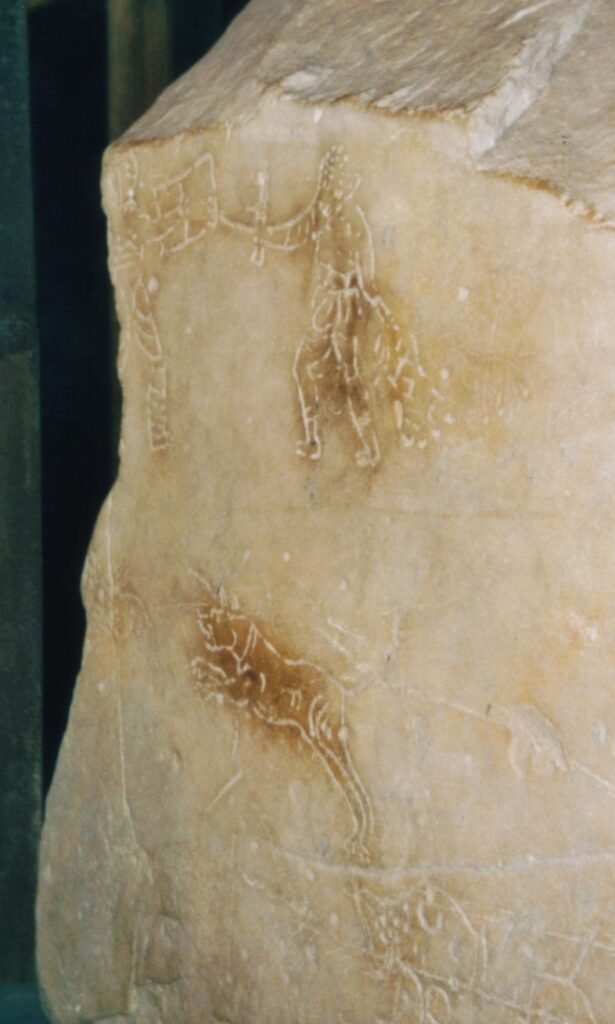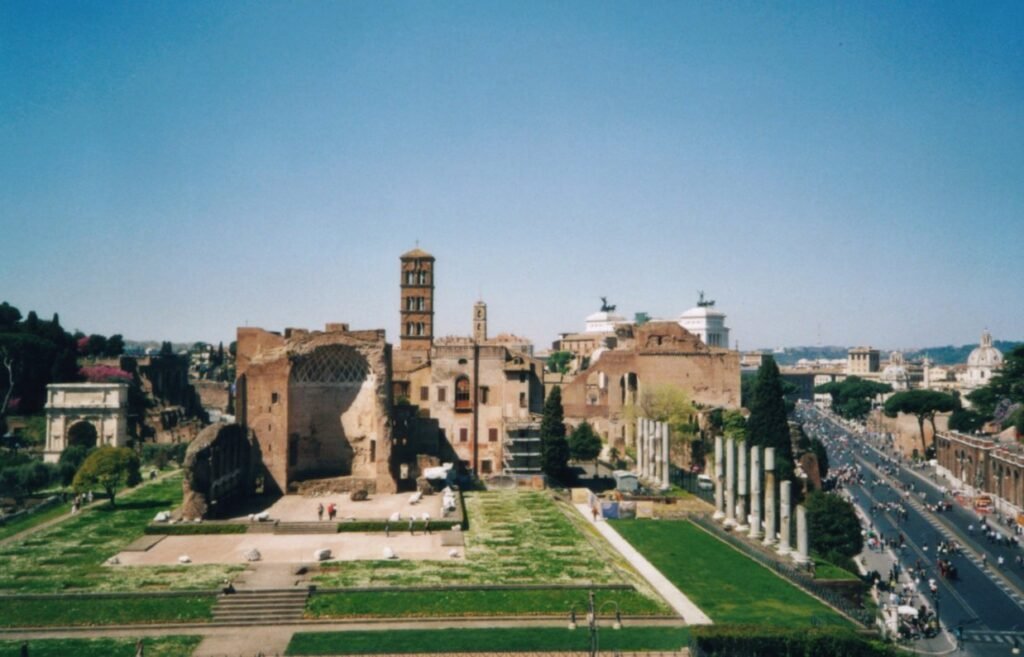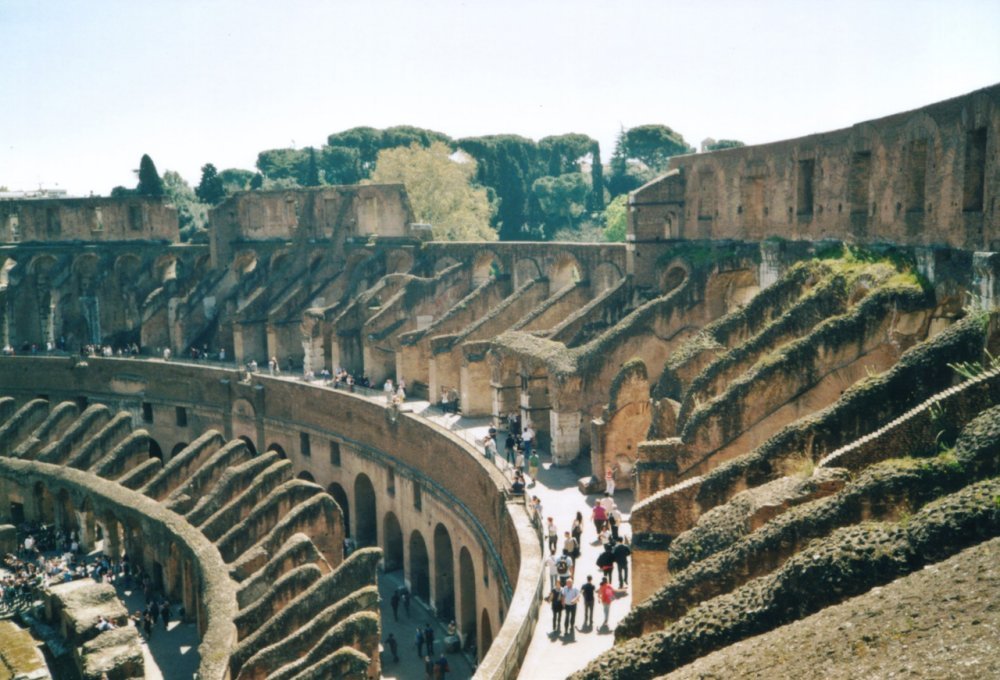In Rome, the capital city of the Empire,
a very complex organisation for the production of the amphitheatre shows was established since the first century AD. The Ratio a Muneribus, a kind of Ministry of the Games, had the task of organising the hunts and the munera.
The pegmata were the machines that emerged in the arena from under the floor and were deployed to create an instant scenery. They were built very near the amphitheatre (from Vespasian to Hadrian) in the Summum Choragium along the Via Sacra. When that location was destined to the grandiose temple dedicated to Venus and Rome, the Choragium was relocated not far away, near the Temple of Isis and Serapis, along today’s Via Labicana.

In Rome the munera were offered by the emperor or by high officials like the praefectus urbi, so they were particularly sumptuous and involved a great number of people: bestiarii, gladiators, attendants, not to speak of the hundreds of animals that were massacred during the hunts.
The preparation of the parades and the assembling of the scenarios took place, as we would say today, in real time. It is assumed that the scenarios prepared in the Choragium before its relocation (when it still was in the area of the temple of Venus and Rome) were transported under the arena by an underground passage and emerged directly in the arena from the hypogea (the undergrounds) through big trapdoors in the wooden floor.

Actually the hypogea, because of their extreme complication, had never been studied in deep until 1996, when a group of Italian and German archaeologists started a thorough survey of the walls and shed light upon the chronology of the repairs made during the centuries and the working of the underground equipment. The history of the hypogea was then divided into four time stages:
- a first phase with thin pillars supporting the floor of the arena,
- a second phase in which these structures were strengthened,
- a third phase of further reinforcement and
- a fourth one in which the hypogea were finally divided by the walls we see today. In this last stage were used materials fallen down from the top of the building.
It seems certain, by the dates stamped on the bricks, that the walls supporting the arena were first built about ten years after the inauguration of the amphitheatre (80 AD); it is generally agreed that before their construction, that dates back to Domitian times, the arena could be filled with water in order to produce naumachiae, i.e. mock naval battles. Dio Cassius (Historia Romana 65.25) wrote about the inauguration: “For Titus suddenly filled this same theatre with water and brought in horses and bulls and some other domesticated animals that had been taught to behave in the liquid element just as on land. He also brought in people in ships, who engaged in a sea-fight there, impersonating the Corcyreans and Corinthians….”. It was therefore assumed that before the walls were built, in a phase called “pre-arena”, the floor must have been supported by a wooden structure placed under it. This would have allowed to fill the arena with water so as to stage the naumachiae.
There were also found some remains that have been interpreted as traces of the “locks” necessary to make the arena waterproof up to a depth (5 feet) sufficient for the ships to float. In the underground there are two spaces in particular were it is thought that the ships were prepared and kept aground before the water filled the arena, and were then launched at the right moment. These spaces have been called “darsene” (docks) by the specialists. Lugli (L’Anfiteatro Flavio) argues that the practice of the naumachiae may have been abandoned because of the complications involved in keeping the arena waterproof, and also because in the city there were other places dedicated to these super productions.
During the centuries the hypogea were greatly modified many times, after their almost complete reconstruction after the 217 fire. That is why it is very difficult to ascertain the different functions of the underground chambers and spaces. Surely there were areas reserved to dangerous animals, and there are evident traces of the elevators that raised the animals (and perhaps not only them) up to trapdoors placed all around the arena. The scenarios were probably first transported into the underground, and then driven up ramps and deployed in the arena by means of movable platforms placed in the central area. We can only imagine the frantic activities that took place on the day of the show down there, in the dark narrow corridors with the roar of the crowd above and the smell and the din of men and beasts, just like in a giant circus.

The visit
I went with a guided group to visit the hypogea and then up to the 2nd and 3rd floors. Our visit was led by Dr.ssa Valentina Mastrodonato, whom I warmly thank for her competence and helpfulness.
The entrance to the underground is by a staircase placed along the main axis in the NW area of the amphitheatre (near the Stern buttress). These service areas are beneath the Porta Libitinaria, where there was also the underground corridor that connected the Ludus Magnus to the Colosseum. Follow my visit with the pictures I took on that occasion. The points and directions of the shots are marked on the detailed map of the underground (here below).



Photo 1 shows the vault of the main central corridor, that also appears in 2. The walls are very well preserved, as this place some time in the V-VI centuries AD was filled up with earth, probably also due to the obstruction of the drains. The structures remained thus buried until the end of the XIX century, when they were brought to light again, after a long fight against the water.
It was then discovered that the walls under the arena date back in fact to the 1st century AD, but also that there are many additions and rebuilding dating back to the 2nd and 3rd century.

Photo 3 shows the bronze attachment of a capstan sunk in the floor of the two oblique corridors on the right and left of the central corridor. Each corridor has six of these attachments, marked on the map on the right by green circles. The capstans probably pulled the ropes necessary to activate the equipment of the scenarios and/or to open up trapdoors. Please note the brick floor (opus spicatum). Photo 8 shows another attachment.

The door of photo 4 leads to the “dock” where the ships were prepared for the naumachiae during the phase that the scholars call “pre-arena”, i.e. before the brick walls under the arena were built.


Photo 5 shows the row of the bronze attachments in the “dock”. Photo 6 shows the corridor of photo 2 in the opposite direction. Here the travertine blocks still appear surprisingly new.

Under the corridor of photos 2 and 6 there is (7) a drain for the rain waters – that on that day were particularly clear. We understood that a safety hazard for the visiting public is the slow outflow of the water. The underground may be flooded during a downpour and the water may reach a dangerous level for the visitors. That is why the visits to the underground are suspended in case of very bad weather. Photo 8 shows another attachment for the capstans.

A section of the arena floor was recently reconstructed in wood. When one comes out from beneath, photo 9 shows the central corridor between the brick walls that once supported the arena floor and divided the area in specific zones for the different activities. A model (10) reproduces the wall of the arena underground before the Domitian walls. The big arches were planned when the amphitheatre was built; it was at this time that the space under the arena could be flooded, like an enormous bathtub.
This may have been possible only in the period between the inauguration (80 AD) and the construction of the wall, whose bricks bear Domitian stamps. In this phase – called by the scholars “pre-arena” – a floor for hunts and gladiator games could be built by raising a mobile structure made of wooden pillars and beams, traces of which have been discovered. In fact, German archaeologist Heinz-Jurgen Beste, from the German Archaeological Institute, on occasion of the 1998-1999 excavations found out that some travertine blocks – placed in a rather regular pattern on the underground floor (where they haven’t been taken away or covered) – may be interpreted as the seats of wooden pillars of the supporting structure.



Photo 11 shows two types of the capitals of the columns that supported the roof of the maenianum summum (the upper floor of the cavea). They were found in recent times, when the arena was excavated. There are two types of capitals: on the left the older type, dating back to the restoration of the Colosseum in Severian times after the fire that destroyed the amphitheatre in 217 AD; on the right the more recent type, probably dating back to the VI century AD. ). It is interesting that no capital from Flavian time was ever found….

Photo 12 shows some graffiti on a marble block: two gladiators fighting and a feline attacking. It is assumed that they were impromptu sketches made by some spectators of the games.
We were lucky, as it was a beautiful day; after the visit of the underground we went up to the 2nd and 3rd floor, where one can enjoy a magnificent view (13, 14, 15, 16) of the Arch of Constantine and of via dei Fori Imperiali.



Also the view of the interiors from above (17, 18, 19 e 20) is wonderful: one can appreciate the width of the cavea.




The visit was thorough and exciting! Our guide Valentina was very competent and efficient! I actually tormented her with a lot of questions so as to have as many explanations as possible. I thank her very much for her collaboration in preparing this webpage. I advise everybody to book and visit.
